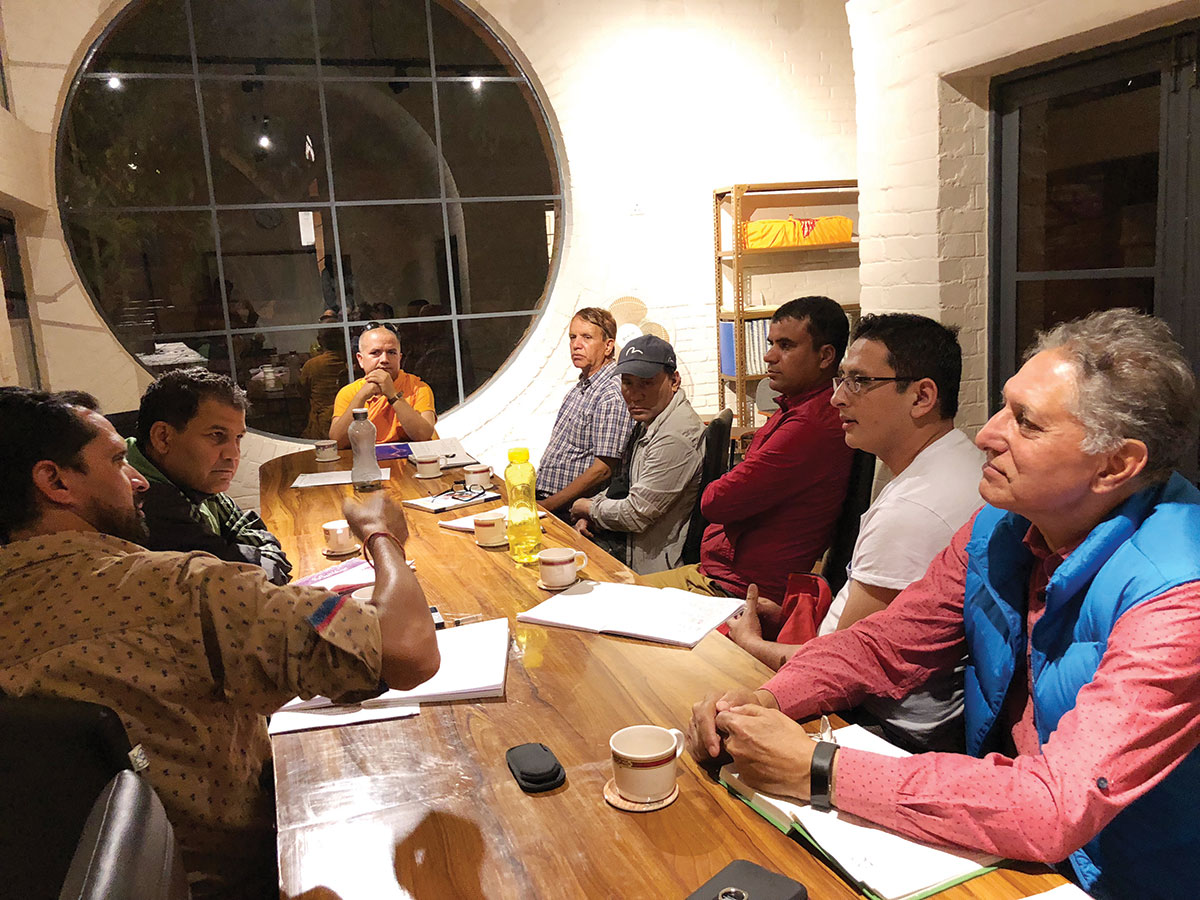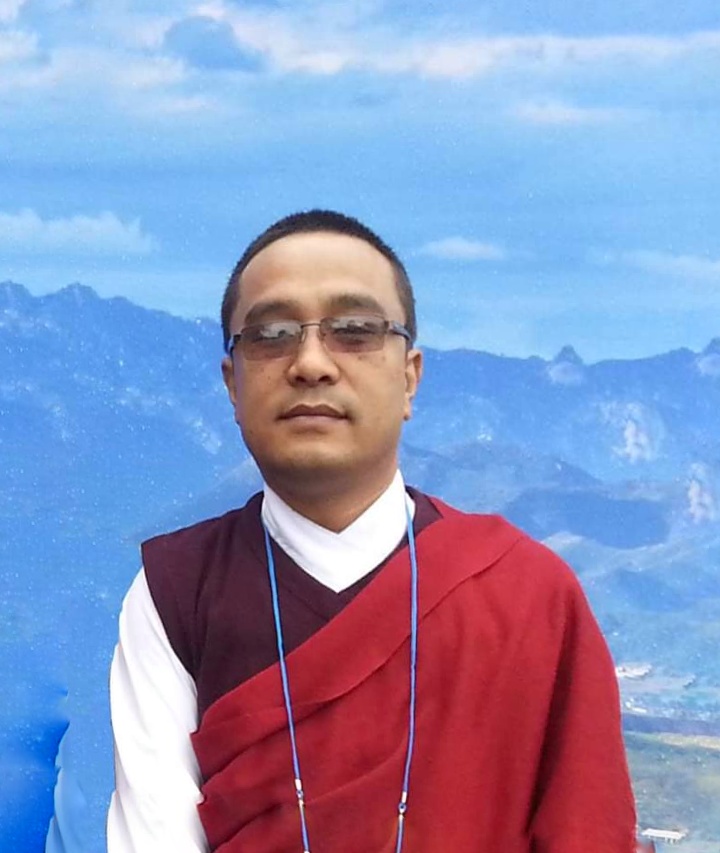Born near the mountains of eastern Sankhuwasabha district, Ramesh Dhungel did not like the idea of going to the US to study Nepal’s Himalayas. But that was almost three decades ago, and he did not have a better option at home.
Prof. Ramesh Dhungel
He used to work at the Tribhuvan University's Center for Nepal and Asian Studies (CNAS) back in the 1980’s. His contemporaries often talked about going to the West for further studies, but he did not like it. A gold medalist in cultural studies from the Tribhuvan University, he drew inspiration from Nepal’s noted historian and epigraphist Pandit Dhanavajra Vajracharya. But as destiny would have it, he embarked for the US in 1992 for higher studies, first and briefly to George Mason University and then to Columbia University, where he spent five years. Then director of CNAS, Kumar Khadga Bikram Shah, who appreciated Dhungel's scholarship, granted him an academic leave.
An MPhil and PhD from Columbia University and author of a number of acclaimed publications, Professor Ramesh Dhungel needs no introduction. He is one of the few Nepali scholars that academics and journalists from home and abroad seek out on Himalayan cultures, heritage, history, and Buddhist studies. His PhD thesis, which was later published as a book, The Kingdom of Lo (Mustang): A Historical Study, serves as a primer for the study of the hidden kingdom of Mustang.
“At first, I didn't feel good about it. I kept thinking, ‘Why should I go to Britain or the US to study my own heritage?’” recalls Dhungel. “But then, everybody talked about the high academic standards of American and British universities. So I went for an educational experience.”
Studying in Columbia was transformative in many ways. “The academic rigor there was extraordinary. There were unlimited resources for a student with limited time. Libraries opened whole night with access to millions of books and journals. Even rare books about Nepal that are not available in Nepal were there,” he recalls.
“I could have done PhD at Tribhuvan University also. But I would not get the best education. In Columbia, you could learn from the best professors from around the world,” Dhungel says. “They made every effort to ensure that research conformed to utmost objectivity and precision. A postgraduate research from a university like Columbia adds to the stock of existing knowledge, as we often say in academia.”
When in New York, the thought of how Nepal lacked a good academic program in Himalayan cultures and heritages constantly gnawed at him. Even back then he harbored a wish to start a world-class academic center in Nepal for Himalayan studies. Years later, he and a few colleagues were able to establish the Department of Buddhist Studies at Tribhuvan University, Nepal’s biggest and oldest center of higher learning.
But Dhungel wished to run programs with exclusive focus on Himalayan Buddhism, for which the department wasn’t enough. So he started Lumbini College of Buddhist and Himalayan Studies in 2012 with an affiliation from Lumbini Buddhist University. Situated inside the premises of Hyatt Regency in Kathmandu, the program has ties with the Technical University of Berlin.
“As is evident from the name, we focus on Himalayan Buddhism. Our programs are unique in the sense that nowhere in the world will you find such courses on Buddhism focusing on the study of Buddhist heritage and history of the Himalayas. We emphasize Buddhist art and architecture, philosophy, and language studies,” says Dhungel.
Building on the unique blend of Buddhism with cultures and history of the Himalayan region, Professor Dhungel has high hopes from the master's degree program in Buddhism and Himalayan Studies (MBHS), which is his brainchild. Major subjects offered include: Buddhist art and architecture, traditional heritage conservation, discourse analysis and hermeneutics, Buddhism in Nepal Himalaya, Buddhist philosophy, and history. Two major source languages of Buddhism—Tibetan and Sanskrit—are also taught. The program is run fully in English medium.
“Our aim is to draw students from across the world,” Dhungel adds. “We may not beat Columbia or Oxford in terms of size and resources, but for the study of our Himalayan heritage and Buddhist tradition, nobody can beat us.”

Going by Dhungel’s qualifications and commitment, the goal is not difficult. Says Umesh Regmi, a MBHS alumnus and now department head in Buddhist studies at Padma Kanya Campus: “You don't need to talk about the qualifications of Professor Dhungel, a renowned scholar. The program offered there is highly beneficial for anyone in the world who wants to study Himalayan Buddhism.”
Regmi, who has been closely observing the college since its inception, asserts that a combination of Himalayan heritage with core Buddhist studies and source languages makes MBHS a potent program. “The program follows standard international semester and grading system. It was a great learning experience for me too.”
Dhungel aims to make the MBHS the most sought after program in Himalayan Buddhist studies. “We have the mountains, we have rich culture, and we are the land of the Buddha. Wouldn’t it be wonderful if people from the world over come to Nepal to study our Buddhist heritage?”
Why Himalayan Buddhism?

Manik Ratna Shakya
Dean, Lumbini Buddhist University
There are three major Buddhist traditions in Nepal. First, the Buddhism practiced in the Himalayan regions; second, the traditional Buddhism of Kathmandu Valley; and third, the Theravada Buddhism practiced by bhikshus and bhikshunis. These three forms of Buddhism are Nepal’s heritage.
Himalayan Buddhism has its unique features, and deserves careful protection and promotion. The program offered by Lumbini College of Buddhism and Himalayan Studies is important in this regard.
There are about 400 monasteries, big and small, in Nepal’s sparsely populated Himalayan region. They are Nepal’s great heritage. It is important to preserve them in their antiquity and all historical as well as religious attributes.
Currently, only few people know about the Buddhism and Himalayan Studies program. It needs to be publicized so that all those interested know about it and get its benefits, wherever they are in the world.
I request Nepal government to appreciate the Himalayan heritage and support us expand this education as widely as possible.

_20200508134103.jpg)
)









